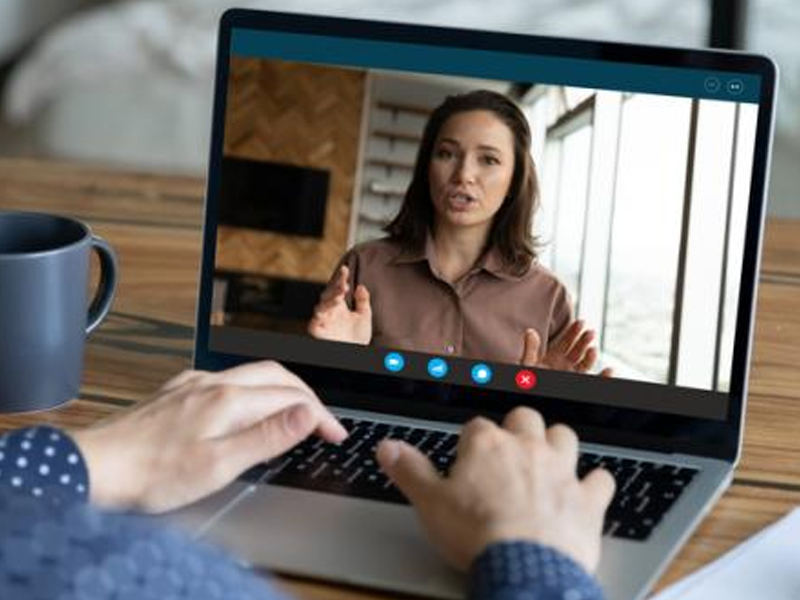30th August 2023
Virtual meetings are here to stay. The pandemic brought virtual meetings right into our homes. For many it was a challenge to adapt to this virtual conversion while some took to it quite naturally. Regardless, the challenge now is to master this virtual workspace.
Welcome to Videoconferencing Etiquette. This is a relatively new skill for most of us. I’ve had the chance to work with some amazing people on different platforms and would like to share nine practical tips that will be of great assistance in your next virtual meeting. It will empower you to present your message in a professional and confident manner.
TIP 1: LOCATION. Choose the best location. Do not automatically settle for wherever your computer is set up; be ready to relocate to ensure you are in the most suitable and quiet indoor space.
TIP 2: FRAMING. Try to position yourself at eye level with the camera—adopt a landscape orientation. You may wish to leave a small amount of headroom at the top of the frame and just below the chest.
TIP 3: LIGHTING. Your lighting has a significant effect on your viewers even after you have turned off your lights! Try to have a soft, even amount of light on your face. Avoid strong back lights and sharp front lights.
When using natural light, be aware that it may not be consistent as the day progresses.
TIP 4: CAMERA. if you are using an external camera, position it at eye level so that you can look directly into it. If you are using the integrated camera on a device, be sure to raise it to eye level.
If you are looking for a camera there are several options that may suit your needs at Logitech or Microsoft.
TIP 5: MICROPHONE. Since sound is the most crucial element of a virtual meeting, consider a standalone external microphone, which will eliminate most incidental background noises. It also allows you to place the microphone in the optimal position.
Proper microphone placement is essential to capture clear and intelligible speech. Remember to limit distracting noises by shutting windows, doors and turning off notification sounds on all devices.
However, if you have to use the integrated microphone on a device or headset, be aware of keyboard noise and minimize clothing or breathing noise.
Desktop: If you are using a desktop (stand-alone) microphone, be sure to place it approximately 10 to 15 centimetres away from your mouth.
Headset: If you are using a headset microphone, be sure to position it about approximately 2 to 5 centimetres away from your mouth.
Built-in: If you are using a built-in microphone on your device (usually a part of the camera), be sure no objects are blocking it.
If you are looking for a microphone there are several options that may suit your needs at Shure or RØDE.
TIP 6: APPEARANCE. Your appearance leaves a lasting impression. The reality of a virtual meeting is that you are much closer than an in-person meeting. You cannot escape the scrutiny of other participants in the virtual space.
You may be unexpectedly required to stand up for an activity or to minimize a sudden distraction in your space. Always be dressed as you would for an in-person meeting.
TIP 7: BACKGROUND. If possible, use a blank or uncluttered wall for your background. Avoid backgrounds with very bright lighting or distracting objects. If you want to use a virtual background, a greenscreen will certainly add a professional touch.
If you are looking for some virtual background options, Shutterstock has some great ideas. Search for ‘Home Office Zoom Backgrounds’. Greenscreens can be purchased from professional suppliers, or you can pop down to your local fabric store and buy some green cloth!
TIP 8: TEST YOUR DEVICES. After logging in, before opening the camera, be sure to check your device settings. Always ensure you know how to screen share images or a video before the presentation.
Check all connections before switching on your camera in the virtual meeting; the fastest method usually is to check all cables are connected properly and restart your device if it still fails.
You can test your internet connection by using a website such as Speedtest or Fast. Depending on your geographical location, Internet speeds can vary greatly and change throughout the duration of the day.
TIP 9: PARTICIPATION. Good eye contact is an integral part of communication. In a virtual meeting it does not mean just looking at a person’s face on the screen but looking directly into the camera.
Be attentive to good on-screen manners. Apply the same standard as when you are face-to-face with a person. Essentially you are meeting face-to-face in someone’s living room!
Turn-taking is an essential skill with face-to-face communication. It is even more difficult in a virtual meeting because of internet delay time. Extra care is needed to avoid interrupting other participants. Use the virtual hand icon or raise your hand to let the participants know you have something to share with the group.
Keep gestures close to your body so that they will be visible on camera, and try to use more facial expressions, as your hands will be less visible.
Know your material well. If you are overly dependent on your notes, this will be more obvious on the video screen than in-person.
Did you find this article useful? After applying these tips in your next virtual meeting, I’d be interested to hear how it went.



